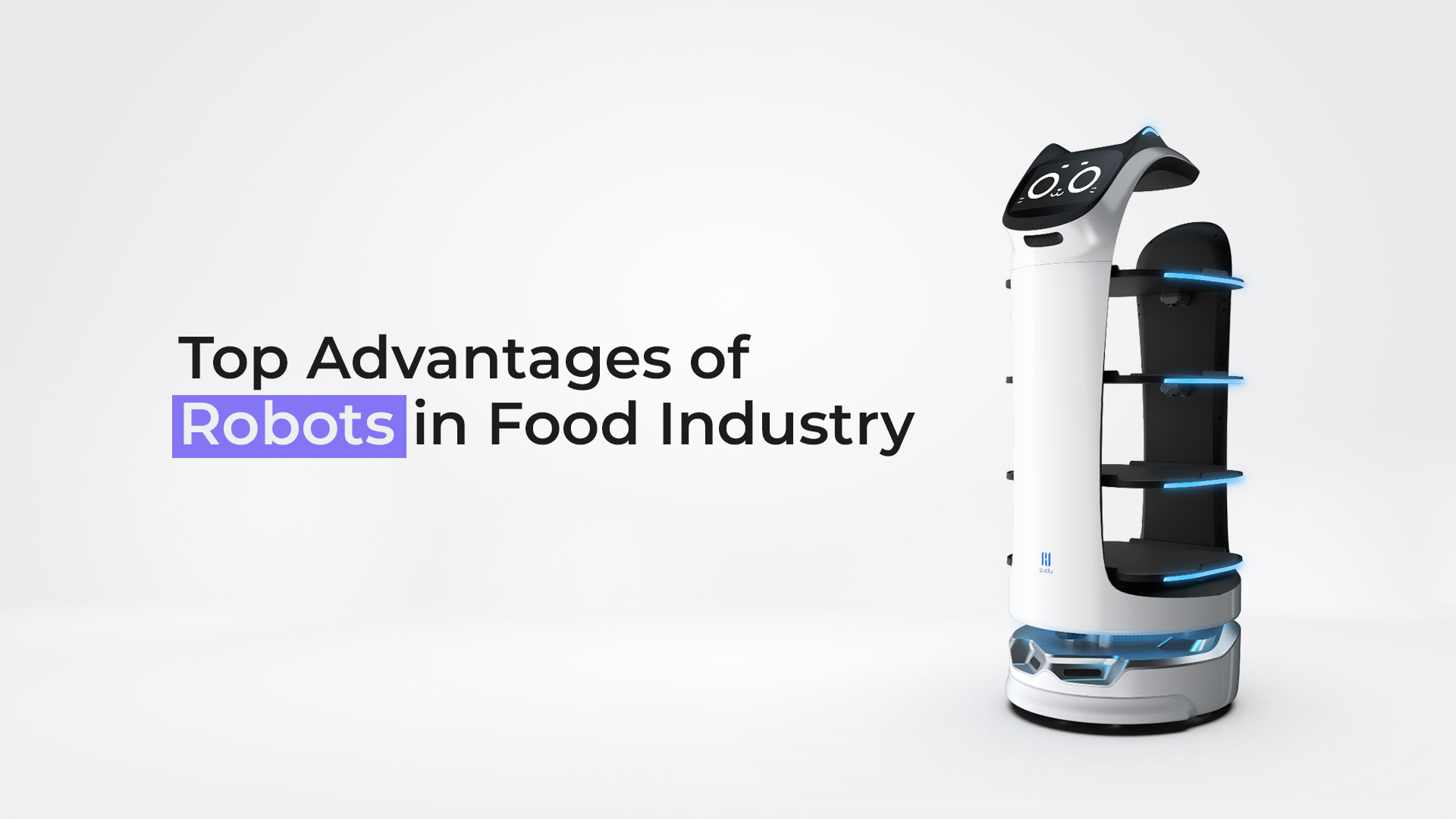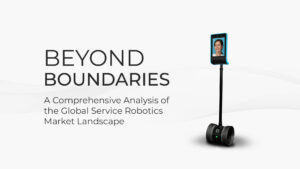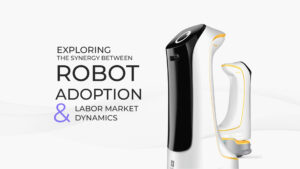Introduction
In the ever-evolving landscape of the food industry, the integration of robotics has ushered in a new era of efficiency, precision, and innovation. As culinary landscapes transform to meet the demands of a rapidly growing global population, the advantages of employing robots in various facets of food production become increasingly evident. This article delves into the multifaceted benefits that robots bring to the food industry, revolutionizing processes, enhancing quality, and redefining the future of food manufacturing. From improved production speed to enhanced safety measures and innovative solutions, explore how robots are not just changing the way we produce food but setting new standards for quality, sustainability, and overall operational excellence.
Integrate advanced robotics for unparalleled efficiency and precision in the food industry!
Table of Contents
Advantages of Robots in food industry
1. Automation of Repetitive Tasks
Robots showcase exceptional proficiency in executing monotonous tasks, ensuring a remarkable level of accuracy and consistency throughout various facets of food manufacturing. Their integration into production processes allows for the seamless automation of tasks such as packaging, sorting, and dispensing. This not only significantly reduces human fatigue but also mitigates errors associated with repetitive work, contributing to a more streamlined and error-resistant food production environment.
2. Improved Productivity
Embracing robotics in food processing introduces a notable surge in the speed at which food products are processed and packaged. The consistent and reliable operation of robots plays a pivotal role in maximizing the efficiency of production lines. This leads to reduced downtime compared to human workers, contributing to an overall enhancement in productivity and the ability to meet increasing demands with agility.
3. Enhanced Food Safety and Contamination Risk Reduction
The incorporation of robotics into food processing serves as a robust strategy for diminishing direct human contact with food products, thereby minimizing the risk of contamination. Robots excel in operating within controlled environments meticulously optimized for stringent food safety standards. Furthermore, advanced robotic systems come equipped with the capability to detect impurities or inconsistencies in food items, providing an additional layer of security to safety protocols and assuring consumers of heightened product integrity.
4. Increased Speed and Accuracy
Robots are designed to operate at high speeds without compromising accuracy, enhancing overall efficiency in various tasks, such as cutting, cooking, and decorating. This precision is not only beneficial in the general context of food production but also holds significance for applications in waiter robots. The ability of waiter robots to navigate swiftly and accurately through dining spaces ,. It not only ensures timely service but also contributes to a seamless and enjoyable dining experience for customers, aligning with the broader trend of automation in the hospitality industry.
Invest in KettyBot and cope with the modern evolutionary world!
5. Reduction in Waste
The precision exhibited by robots in cuts and measurements significantly reduces material waste in food production processes. Real-time adjustments to production, made possible by robotic systems, minimize overproduction and the associated waste. The improved accuracy and reduced errors contribute to a greater yield from raw materials, aligning with sustainability goals and minimizing the environmental impact of food processing.
6. 24/7 Operation
Robots exhibit unparalleled capabilities for operating around the clock, a feat human workers cannot sustainably manage. This continuous operation proves invaluable during periods of high demand spikes, such as holidays or special events, enabling businesses to meet customer needs promptly. Moreover, the round-the-clock nature of robotic operation allows for more flexible scheduling of maintenance and sanitation procedures, optimizing operational efficiency.
7. Long-Term Cost Savings
While the initial investment in implementing robotics may be substantial, the long-term advantages translate into significant cost savings. Robots play a pivotal role in reducing ongoing labor costs and associated expenses like healthcare and training. Beyond these direct savings, their increased efficiency and minimized waste contribute to fostering a healthier bottom line for players in the food industry, establishing a sustainable framework for future growth and adaptability.
Embrace robotics in the food industry to enhance productivity and reduce operational costs!
8. Improved Consistency and Quality Control
Robotics play a pivotal role in ensuring that every food product maintains a consistent size, shape, and quality. The reliability of quality control is enhanced with robots, programmed to adhere to exacting standards. This consistency not only elevates brand reliability but also fosters customer trust in the consistently high quality of food products, contributing to brand loyalty and positive consumer perceptions.
9. Increased Production Capacity
The strategic implementation of robots can significantly ramp up production capabilities without the need for facility expansion. The adaptability of robotic systems to quickly adjust for different products or packaging types allows businesses to offer a diverse range of offerings. As demand grows, robots become instrumental in helping businesses scale up quickly without incurring a proportional increase in costs, contributing to the agility and competitiveness of food industry players.
10. Improved Employee Safety by Automating Hazardous and Dangerous Tasks
Robotics take on hazardous tasks, including cutting, deep-frying, or handling toxic substances, effectively reducing workplace accidents and ensuring a safer working environment. The adoption of robots also mitigates physical strains associated with lifting or repetitive movements, contributing to improved employee well-being. Beyond the human benefits, enhancements in employee safety often lead to lower insurance costs for businesses and foster a more satisfied and motivated workforce.
11. Scalability and Flexibility to Adapt through Customization
Embracing customized robotic solutions introduces a strategic edge as these technologies are meticulously designed to fit specific production needs and possess the adaptability to seamlessly grow with the evolving demands of the business. The inherent flexibility in changing or updating robot programming positions companies to swiftly adapt to dynamic market trends or effortlessly integrate new product lines. Leveraging modular robotic systems further amplifies scalability, enabling businesses to expand or reconfigure without the need for a comprehensive overhaul of the production line, fostering a robust foundation for future growth.
12. Real-time Data and Analytics
The integration of robotics in the food industry extends beyond mere automation, often incorporating sophisticated sensors that generate valuable real-time data. This wealth of information proves instrumental in optimizing operational processes. Insights derived from this data not only empower better decision-making but also instigate continuous improvement processes. Furthermore, the predictive capabilities of data analytics enable businesses to anticipate maintenance needs, proactively addressing issues and significantly reducing unexpected downtime, thus elevating overall operational efficiency.
13. Improved Inventory Management and Tracking
Robotics seamlessly integrated with inventory systems usher in a new era of precision in tracking ingredients and products throughout the entire supply chain. The automated updates to inventory levels contribute to a more efficient order fulfillment and restocking process. Beyond operational efficiency, the greater accuracy in inventory management leads to reduced losses, facilitating improved financial planning and resource allocation strategies.
14. Reduction in Labor-Intensive Tasks
The strategic deployment of robots plays a transformative role by eliminating the necessity for human workers to engage in physically demanding and monotonous tasks. This shift allows employees to redirect their efforts toward more strategic and creative endeavors that demand human insight and decision-making. The resultant transition away from labor-intensive work not only enhances job satisfaction but also serves as a pivotal factor in reducing turnover rates within the workforce, contributing to a more stable and contented working environment.
Explore how BellaBot can help!
15. Precision and Portion Control
The unparalleled accuracy of robots translates into the assurance of exact portion sizes, a pivotal attribute in the food industry for maintaining unwavering consistency in quality and effective cost control. This precision extends its benefits to maintaining nutritional standards and ensuring compliance with labeling requirements. Accurate portioning emerges as an efficient mechanism for reducing excess consumption of ingredients, thereby optimizing resource usage and aligning with broader sustainability objectives.
16. Shorter Production Cycles
The adoption of robotic systems heralds a transformative reduction in the production timeline, streamlining processes from initiation to the swift delivery of the final product to consumers. This operational efficiency not only accelerates product market entry but also ensures a responsive approach to ever-changing consumer demands. The agility provided by swifter production cycles contributes significantly to delivering fresher products to consumers, addressing the time-sensitive demands of the dynamic food industry landscape.
17. Increased Customer Satisfaction
The unwavering consistency and elevated quality standards facilitated by robotics play a pivotal role in enhancing customer experiences and overall satisfaction. The adaptability of businesses, guided by robotic precision, empowers them to swiftly respond to evolving consumer preferences and trends, effectively meeting customer desires. Moreover, the integration of robotics in ensuring improved food safety practices acts as a critical assurance, minimizing the risk of food-borne illnesses and, in turn, safeguarding consumers while fortifying the brand’s reputation.
18. Adaptation to New Regulations and Standards
The remarkable adaptability of robotic systems stands as a strategic asset, enabling swift reprogramming to ensure compliance with ever-evolving food safety regulations and quality standards. This dynamic capability ensures that businesses seamlessly achieve compliance without significant disruptions to their operations. Proactively addressing regulatory changes not only safeguards operational integrity but also positions the brand as a responsible and forward-thinking entity within the industry.
19. Reduced Human Error
The strategic integration of automation through robotics significantly mitigates the potential for human error across various facets of food production, encompassing measurement inaccuracies to cross-contamination issues. This reduction not only serves as a preventive measure against costly recalls but also elevates overall product reliability. The maintenance of a consistent quality standard through robotics minimizes quality control issues, fostering greater customer trust in the reliability and safety of the products.
20. Innovation and Technological Advancement
The dynamic integration of robots serves as an indomitable catalyst for ongoing innovation and technological progress within the food industry. Robotics create an environment conducive to continuous improvement, propelling the development of new production methods and groundbreaking products. This unwavering commitment to technological advancement positions businesses at the forefront, allowing them not just to adapt but to thrive in the rapidly evolving and dynamic market landscape.
Future of Robots in The Food Industry
In the coming years, robots will revolutionize the food industry, bringing about transformative changes. From intelligent farming to streamlined logistics, these machines will play a crucial role in enhancing efficiency and sustainability. With advancements in artificial intelligence, we anticipate personalized nutrition plans and a reduction in environmental impact. In this future, robots won’t just be tools but essential partners, reshaping how we produce, distribute, and experience food.
Incorporate cutting-edge robotic technology to ensure consistency and precision in every dish!
In Conclusion
The integration of robots into the food industry represents a paradigm shift that goes beyond mere automation—it’s a revolution that transforms the very essence of food production. The advantages discussed underscore the pivotal role robots play in elevating efficiency, maintaining unparalleled precision, and fostering continuous innovation. As we navigate a future shaped by technological advancements, the benefits of robots in the food industry extend beyond streamlined processes; they promise a future where quality is enhanced, safety is paramount, and sustainability becomes a cornerstone. Embracing these technological allies not only ensures the industry’s resilience but also sets the stage for a culinary landscape that meets the evolving needs of consumers while embracing the boundless possibilities of tomorrow’s gastronomic world.
Robots in the food industry represent a technological evolution that enhances efficiency, precision, and safety. From automated food preparation to seamless delivery, these robotic advancements revolutionize the way we produce, distribute, and enjoy food, promising a future where innovation and culinary excellence converge.
Integrate advanced robotics for unparalleled efficiency and precision in food industry!




